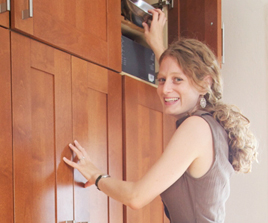Eating Mussels in Belgium
It was the height of summer and I was standing on the main square in Ypres, Belgium with an American film crew working on a World War I documentary. A fresh graduate from the University of Amsterdam, I was putting my MA degree to good use carrying camera equipment across vast fields and setting up lights and tripods in dark, damp spaces for the B-camera team. The physicality of the work surprised me, a far remove from the comfort of analyzing photographs and film clips at the desks of academia.
When the field producer called it a day, the other local assistants and I would drag our weary bodies to the Grote Markt (Great Market Square) and search out a restaurant to determine how we would spend our per diem. The multitude of restaurants lining the square boasted A-frame sandwich boards along the sidewalk, most frequently advertising moules et frites, the Belgian national dish of mussels and fries that was perfect for sharing with a bottle of white wine. We relaxed our aching muscles and traded stories about the day.
The film crew from Los Angeles had all previously worked together, but the two other assistants and I became fast friends. We were on assignment for a month together and spent nearly every waking moment together. They were both native Belgians from Wallonia, the French-speaking part of Belgium. Ypres was our home base during our shoot, in the heart of Flanders, the Flemish-speaking part of Belgium. I was fascinated with the sounds of Flemish, a dialect with a sound and vocabulary distinct from the Dutch I had learned over the past two years in Amsterdam. I was just starting to hear the difference in the dialects, learning that ‘Holland’ and ‘the Netherlands’ could not be used interchangeably, and generally undergoing an education in the minutiae of northern Europe’s historically intertwined cultures. But the complications and details faded when a pile of mussels were placed at the center of the table.
We spent nearly a week in Ypres, the starting point for the filming that would take us all over Benelux and northern France, and ate an incredible amount of mussels in that span. Before then, I had only eaten mussels a handful of times and certainly never imagined they would be something I would bring into my own kitchen. Yet, as the best foods often are, the simplicity of good mussels is deceptive.
This interpretation puts the emphasis on the broth with a dash of spice that is perfect for dipping chunks of bread in, summer or winter. Bought fresh, mussels are still alive and so the key is to keep the shellfish cool as you prepare them. The general rule is that open shells should close when cooled or tapped firmly and open when cooked. Although there is some debate that challenges the idea that unopened shells shouldn’t be eaten, err on the side of safety and discard them.
There’s nothing like travel to get the appetite ready for new tastes and cooking methods, and I’m happy to have Carly Diaz here once again, showing how seeing the world inspires us in the kitchen. Don’t miss her last gorgeous post about Avocado-Banana Smoothies.
- 2 pounds fresh mussels
- 1 fennel, halved, root removed, sliced thinly
- 2 garlic cloves, minced
- 3 tomatoes, diced
- 2 celery stalks, sliced thin
- 2 sprigs of thyme
- ½ teaspoon chili flakes
- 2 cups dry white wine
- 3 tablespoons olive oil
- Italian flat-leaf parsley
- Prepare the fennel, garlic, tomatoes, and celery. Set aside and prepare a bowl filled with ice. Under cool running water, remove the beards from the mussels with a knife and gently clean the shells. Place the shells on ice once cleaned.
- Heat the oil in a large pot or Dutch oven over medium heat. Add chili flakes and garlic, cooking until garlic is fragrant, about 2-3 minutes. Add fennel, celery and tomatoes, and sauté for 5 minutes over medium-high heat, stirring occasionally. Add in white wine, thyme, salt and pepper and cook for 15 minutes. Lower the heat to a simmer, add the mussels cover and cook for about 15 minutes. Serve with a generous amount of parsley and bread on the side.




